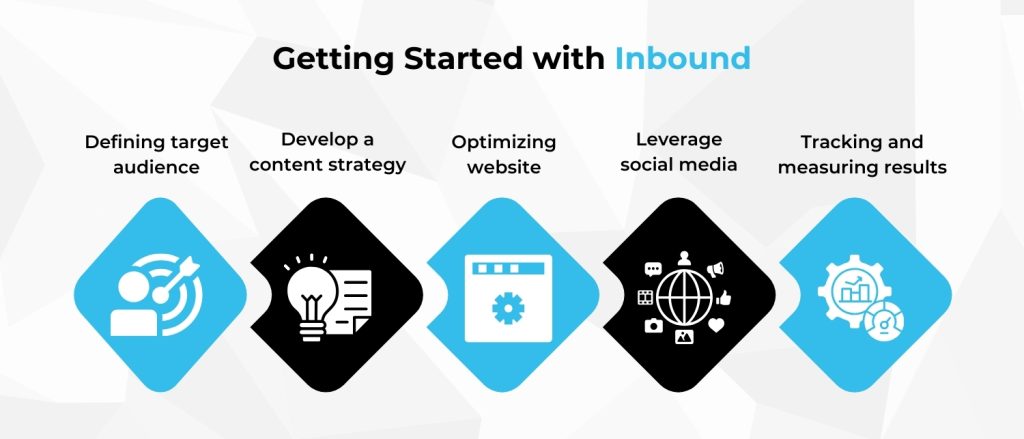Inbound Marketing and the Role of Digital Marketing in Business Growth
Imagine a marketing strategy where your ideal customers actively seek out your brand instead of you having to push your message to them. That’s the core of inbound marketing: creating valuable content that resonates with the needs and interests of your target audience. This strategy attracts potential customers by providing relevant and helpful information, fostering deeper connections and building lasting relationships.
In this blog, we’ll delve into the fundamentals of this marketing approach, its operational mechanics, and how it can significantly benefit business owners looking to enhance engagement and drive growth.
What is Inbound Marketing?

Inbound marketing is a holistic approach that creates valuable content that draws potential customers to your brand. Unlike traditional marketing methods, which often rely on intrusive advertising, this strategy aims to attract customers by delivering relevant and valuable content.
The process involves aligning your marketing efforts with the customer journey, allowing your business to appear precisely when potential customers search for solutions.
For example, a company specializing in eco-friendly products might produce blog posts or guides on sustainable living, reaching an audience that values such information.
By focusing on building relationships and providing genuine value, inbound strategies foster trust and loyalty, ultimately driving sustainable business growth.
Core Components of Inbound Marketing

The Inbound approach encompasses various content types designed to engage customers at different stages of their buying journey:
-
Blog Articles:
Blogs are fundamental to this marketing approach. They offer insights, tips and answers to frequently asked questions. SEO-optimized content increases visibility and positions your company as a trusted authority in your industry. - E-books and Guides:These comprehensive resources provide detailed information on specific subjects and can be offered in exchange for contact details, helping convert readers into leads.
- Visual Content: Infographics and videos simplify complex information, capturing attention and making content shareable across social media platforms.
- Social Media Engagement: Social channels allow for direct audience interaction, enabling businesses to share content, engage in discussions, and cultivate a community around their brand.
- Webinars and Online Events: These interactive formats allow for deeper engagement, providing valuable insights while fostering a direct connection with the audience.
- Paid Ads: Paid advertising, including search and social media ads, can support inbound efforts by targeting users actively looking for solutions or having previously shown interest. Targeted ads bring traffic to the website and encourage lead conversion and engagement.
The Mechanics of Inbound Marketing

Inbound strategies revolve around meeting potential customers where they are in their journey. Businesses can guide prospects from the awareness stage to purchasing by creating high-quality, relevant content. Here’s how the process typically works:
-
Attract:
The first step involves drawing in the right audience through SEO-optimized content, social media engagement, and paid advertising. By offering educational material, businesses can increase their visibility and establish trust. - Engage: After attracting visitors, businesses must engage them by providing valuable insights tailored to their interests. For instance, a detailed guide or comparison chart can assist prospects in making informed decisions.
- Convert: Once trust is established, businesses can convert interested visitors into leads through gated content like e-books or exclusive webinars. Prospects who see genuine value are more inclined to share their contact information.
- Delight: This marketing strategy extends beyond the initial conversion. By consistently delivering valuable content to existing customers, businesses can enhance satisfaction and encourage repeat purchases. Post-purchase follow-ups and support resources help maintain customer relationships.
Why Inbound Marketing is Essential for Business Growth

The inbound approach is practical because it resonates with customers’ needs without being disruptive. It creates a continuous flow of interested leads and nurtures them over time. Here are several reasons businesses should embrace this marketing strategy:
-
Builds Credibility and Trust:
Regularly publishing valuable content will help to establish your business as a reliable source of information. Customers who trust your expertise are more likely to choose your products or services. - Attracts Quality Leads: These marketing strategies naturally draw in those actively seeking your solutions, resulting in a higher likelihood of conversion.
- Cost-Effective Approach: This strategy can be more budget-friendly than traditional advertising, as content can be repurposed and updated to remain relevant.
- Creates Sustainable Resources: It generates a repository of content that continues to provide value long after its creation, increasing brand reach and longevity.
- Enhances Customer Loyalty: Focusing on ongoing value helps businesses retain customers and encourages them to refer others, contributing to sustainable growth.
Getting Started with Inbound

Embarking on your inbound journey requires careful planning and execution. Here are some critical steps to get started:
-
Defining target audience:
Who are you trying to reach? What are their needs and pain points? - Develop a content strategy:What content will resonate with your target audience? How will you distribute and promote your content?
- Optimizing website: Ensure your website is user-friendly, mobile-responsive, and optimized for search engines.
- Leverage social media: Use social media platforms to share your content and engage with your audience.
- Tracking and measuring results: Use analytics tools to track your progress and make data-driven decisions.
This customer-centric approach empowers businesses of all sizes to reach their marketing goals. Creating valuable content and nurturing customer relationships can attract high-quality leads, elevate your brand’s reputation, and fuel sustainable growth. This is the path to choose if you seek a more effective and customer-focused marketing strategy.
Final Thoughts
Inbound marketing enables companies to attract, retain and convert customers by focusing on providing real value. In a world where audiences are more demanding than ever, this marketing strategy offers a refreshing alternative to traditional, disruptive tactics. By investing in quality content that solves real problems, your business can build meaningful relationships, establish authority and drive long-term growth.
Ready to transform your inbound marketing strategy? Contact us today to discuss how digital marketing can help your business grow.